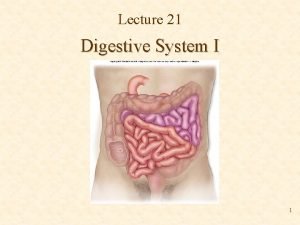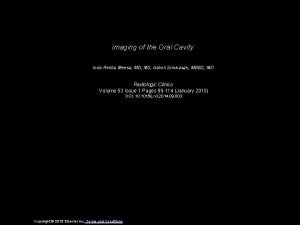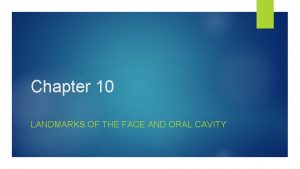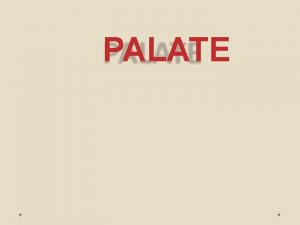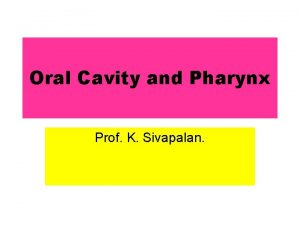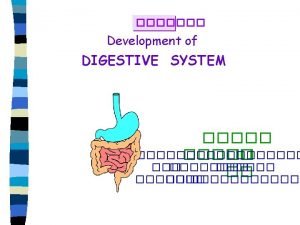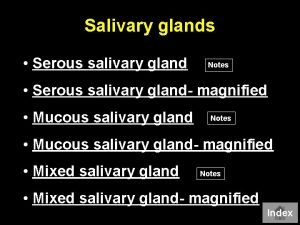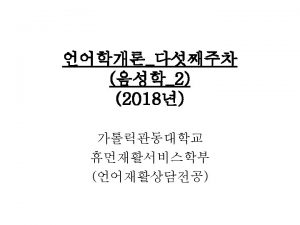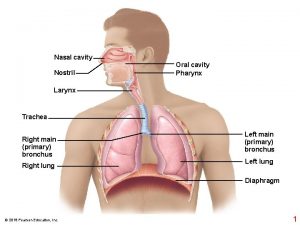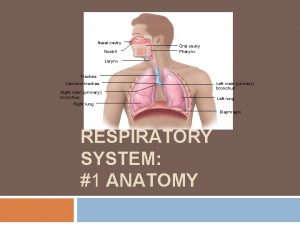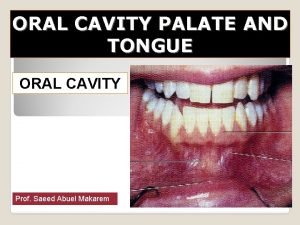Oral Cavity and Pharynx Prof K Sivapalan Salivary

![Salivary Glands • • Parotid – Serous [25 %] Sub Maxillary – Mixed [70 Salivary Glands • • Parotid – Serous [25 %] Sub Maxillary – Mixed [70](https://slidetodoc.com/presentation_image/4fdee943e1aac8748c4f37f3228b253b/image-2.jpg)






- Slides: 8

Oral Cavity and Pharynx Prof. K. Sivapalan.
![Salivary Glands Parotid Serous 25 Sub Maxillary Mixed 70 Salivary Glands • • Parotid – Serous [25 %] Sub Maxillary – Mixed [70](https://slidetodoc.com/presentation_image/4fdee943e1aac8748c4f37f3228b253b/image-2.jpg)
Salivary Glands • • Parotid – Serous [25 %] Sub Maxillary – Mixed [70 %] Sub Lingual, Buccal – mucus. [5 %] Basal secretion – 0. 25 ml / min, 1500 ml/day. 2013 Oral Cavity and Pharynx 2

Contents of Saliva • p. H- 7 at rest, 8 active secretion. • Buffers: bicarbonate, phosphate, mucin. • Enzymes: – Lingual lipase – glands on tongue. – Salivary amylase. • Mucins [Glycoproteins] • Ig. A. • Lyzozyme 2013 • Lactoferrin – binds Fe and bacteriostatic. • Proline rich proteins – protect enamel and bind toxic substances. • Na+, K+, Cl-, and HCO 3 equal to plasma at high flow. • Low Na+ and high K+ at rest. • Exchange controlled by aldosteron. Oral Cavity and Pharynx 3

Functions of saliva. • Moistening and Lubrication – speech, mastication, deglutition. • Facilitating sense of Taste. • Maintaining Oral hygiene – Lyzozyme, Ig. A, enzymes, flow. • Protection of teeth – enzymes, p. H, Ca. – [Causes of Dental caries. ] • Neutralization of gastric acid. 2013 Oral Cavity and Pharynx 4

Control of Salivary Secretion. • Stimuli: – – • • Higher centers [thought, sight, smell- conditioned reflex] Touch- smooth objects [most] Taste- bitter [most] Stomach- irritation Afferents Centre- salivary nucleus. Efferent- Parasympathetic. Sympathetic activity- inhibition [dry mouth in excitement] 2013 Oral Cavity and Pharynx 5

Mastication • Force at the incisors is 55 pounds and molars is 200 pounds. • Purpose: increase surface area for enzyme action and facilitate movement through GIT [differences between processed and naturally occurring food] • Voluntary action but Chewing reflex occurs. 2013 Oral Cavity and Pharynx 6

2013 Oral Cavity and Pharynx 7

Deglutition • Voluntary Stage – food pressed against pharynx • Pharyngeal stage – Afferents[5, 9, 10 CN] to deglutition centre, Efferents [5, 9, 10, 12] – Soft palate- close nasopharynx – Palato-pharyngial folds- slit – Larynx pulled up, vocal cord close, epiglottis fold back. – pharyngeal muscles initiate peristalsis – Upper and lower esophageal sphincters relax • Food falls due to gravity before peristalsis reaches stomach when erect. 2013 Oral Cavity and Pharynx 8

